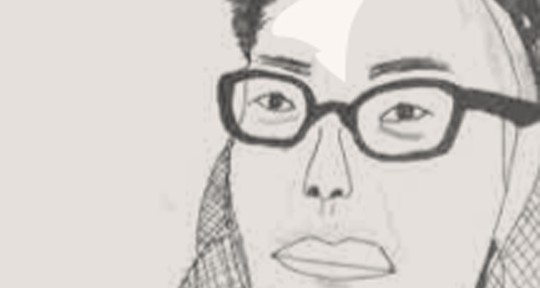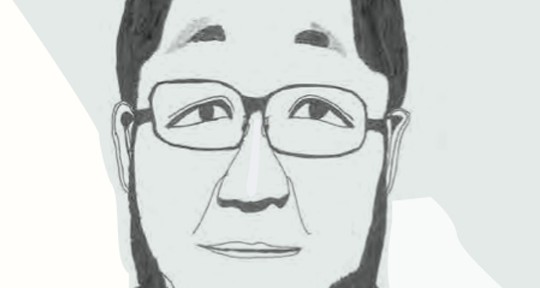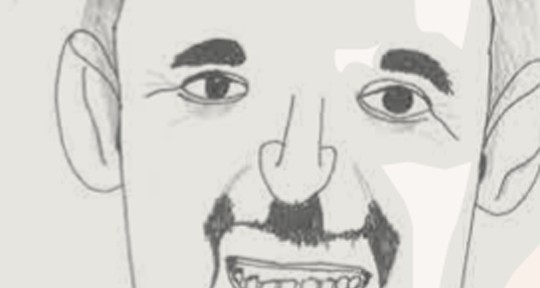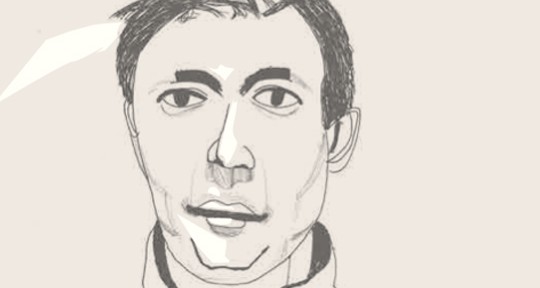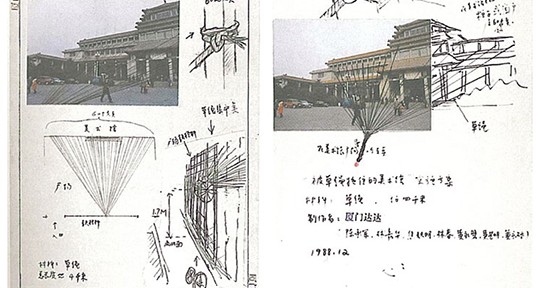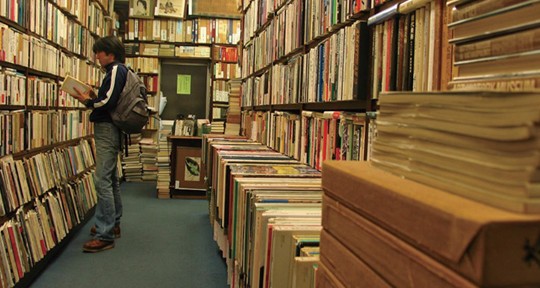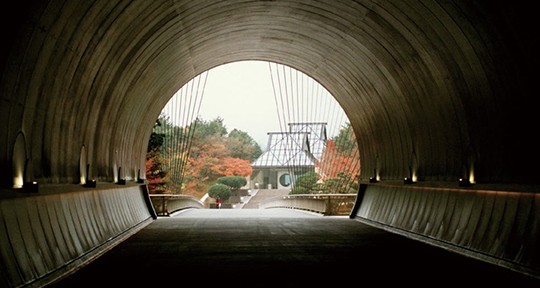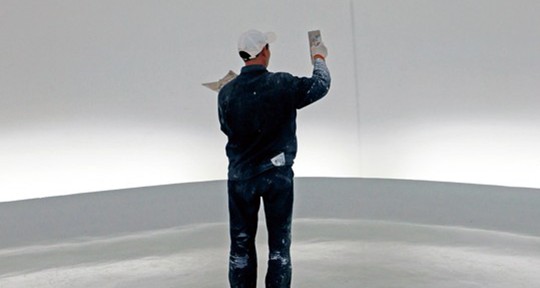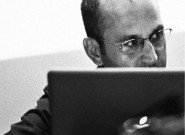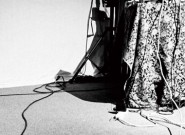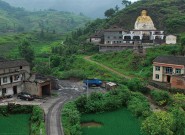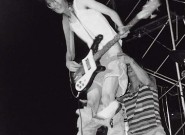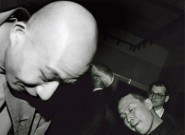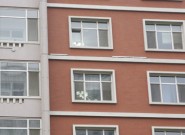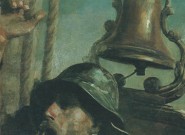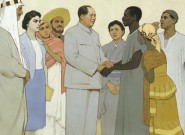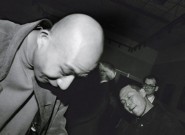This discussion between co-curator of the Shanghai Biennale Jens Hoffmann, independent curator Biljana Ciric, and artist Hu Yun reflects on Hoffmann’s curatorial involvement in the 2012 Shanghai Biennale, and on the role of exhibition makers in Chinese institutional structures. Specifically, it aimed to initiate dialogue on the institutional models that can work in a China-specific…
Read MoreA CALL FOR ACTION IN 2013—WITHDRAWAL TO WITHDRAW MEANS to, within a set of existing regulations that are commonly known by names, go into shock. The withdrawal I propose refers to something different from the classical understandings of breakthrough or flee, for today it is futile to seek creative possibilities in the world of forms….
Read MoreBOOM Concurrent with China’s rapid urbanization over the past three decades is an equally unprecedented museum-building boom. On average, nearly 100 new museums are being built annually across the country. During 2011, that figure reached a staggering 386 new museums— more than one per day. To better gauge the magnitude of this growth, at the…
Read MoreWITH 2012 BEHIND us, it is necessary to organize our thoughts on our industry and on the work that we have done. THE YEAR OF BUILDING TUMULTUOUS MUSEUMS In May of 2012 during Art HK, it was announced that the giant “Yinchuan Museum” would soon be erected in the northwest of China. The news caused…
Read MoreTHE ART WORLD in 2012 witnessed a paradox. On the one hand, the value of contemporary art as an investment continued to rise. Despite a worldwide financial downturn since 2008, the fall 2012 contemporary auctions at the Sotheby’s and Christie’s in New York together brought in close to USD 1 billion. The figure is staggering:…
Read MoreIn Europe, old-fashioned public institutions are receiving ever fewer resources and ever less support, and governments are investing less in cultural benefits to society. As a consequence, many art professionals consider it very normal to seek help from private capital, but we must consider the price of such actions. Critiques and discussions of neoliberal capitalism…
Read MoreHere, we cull from art history three examples of artist interaction with the museum. In the mid to late 1980s, three works by Huang Yong ping and Xiamen Dada adopted a destructive attitude to directly challenge the establishment, burning artworks and even planning to “tow” away a museum. after the turn of the century, artist…
Read MoreIN THE INTERNATIONAL context, the art museum is usually an academic institution of collection, centered on twentieth-century art historical research and open to the public. If the art museum did not establish this basic objective in its work, it would not be able to provide the scholars and students of the world with such a…
Read MoreBREEDING ZOOS OF PEOPLE AN INEVITABLE COMBINATION of charm and disenchantment coexists in virtually every culturally-implicated entity. The museums that rose to prominence in late-twentieth century China are no exception. People are always trying to provide unequivocal definitions of what a museum is. But as carefully constructed cultural destinations, museums serve not merely to assert…
Read MoreIn addition to its ostensible severity and clamor, the fine art museum contains within its depths an invisible void. This void is a place for silence and contemplation; it is not the museum’s most spectacular aspect. MAKING THE MUSEUM While preparing this issue’s cover story for LEAP, I happened to be in Istanbul for the…
Read MoreBorn in France in 1974, the sound artist Yannick Dauby initially began his research and creative work in music, which have substantially expanded into improvisation, electro-acoustic composition, and ethnomusicology. He continues to engage with natural, urban, and industrial environments in an on-going series of sound recordings that find their way into his music arrangements, CD…
Read MoreDino is the stage name of Liao Ming-He, born in Taipei in 1976. He was active in the rock and roll scene by the time he was in middle school, and played bass for the band The Clippers in his later youth. He is also considered a pioneer in his use of primal analog electronics…
Read MoreTHE CALL OF HOME The cover feature of this issue of LEAP, “The Call of Home,” examines China’s countryside from the angle of artistic practice and purposely avoids making the countryside simply an object of longing and homesickness. Instead, it identifies the countryside as an entity that is unable to fit into modernity and its…
Read MoreIn Taiwan, noise is a surplus of culture. It began with a generation of well-to-do youth, and ended with that same generation. The discussion of the history of noise in Taiwan likely dates back to sometime around 1994, to the experimentation, rebellion, political collision, media-ization, intimate gatherings, and festivals with which that period was saturated….
Read MoreWhat is sound? From within the frameworks of visual and conceptual art, how can one successfully portray and comprehend sound? We should begin, of course, by listening. For this issue of LEAP we have commissioned Lou Nanli to create Dwelling in the Fuchun Mountains (Ziming Scroll) Spectrogram, which invokes the dichotomies of “visual-audio” and “seeing-listening”…
Read MoreThe nightlife of Beijing is remarkably lackluster. Long-term foreign residents, bored stiff, often find themselves in search of a little entertainment. These laowai come in all stripes, and the good are mixed in with the bad. Of the various diversions they devise for themselves, one form is particularly noteworthy: “foreign salons” (yang shalong). On the…
Read MoreTHE BOSTON EXHIBITION— 12 abstract paintings, in context with 58 figurative paintings showing 200 years of American art— jolted the Chinese public and artists out of the Soviet and Socialist Realism then permeating the academies in the period following the Cultural Revolution. The artists had no frame of reference to absorb these new art forms,…
Read MoreIn 1942, Mao Zedong spoke to the encampment of a burgeoning Communist Party of China in Shaanxi province, in what would later be heralded as the “Yan’an Talks on Literature and Art.” At the time, the American scholar Joseph Nye was five years old. Half a century would pass before he, as dean of Harvard’s…
Read MoreARTISTIC PHARMACOLOGY At last year’s Venice Biennale, five Chinese artists set out to represent their country through the olfactory. Visitors to the state-sponsored China Pavilion were confronted with a country abstracted into tea, baijiu, lotus, medicinal herbs, and incense. Even by the standards of contemporary art’s very own Olympics, this reliance on cultural signifiers was…
Read More
